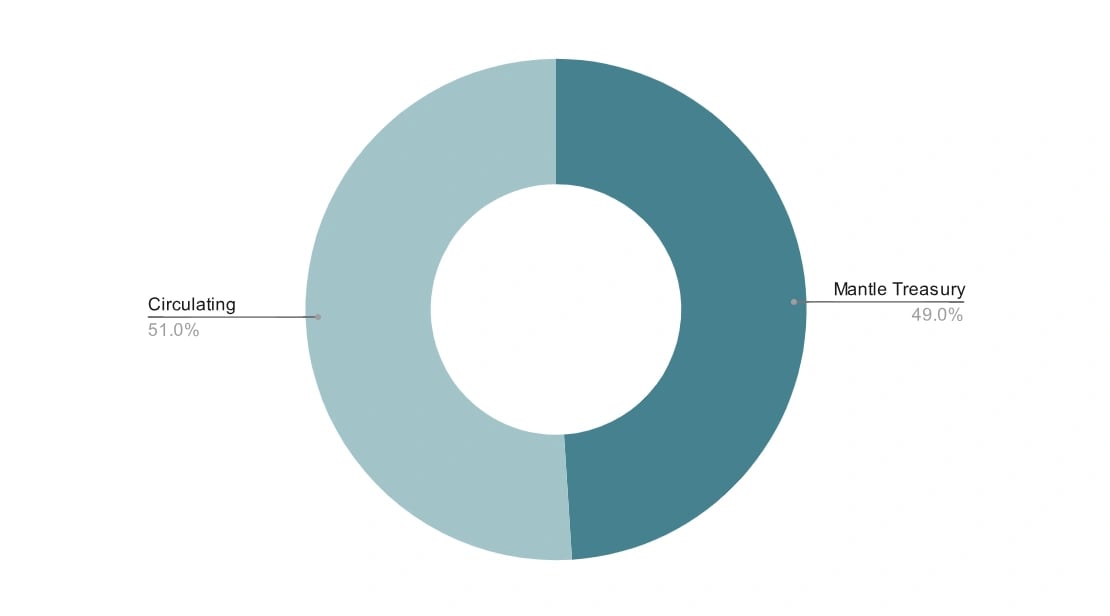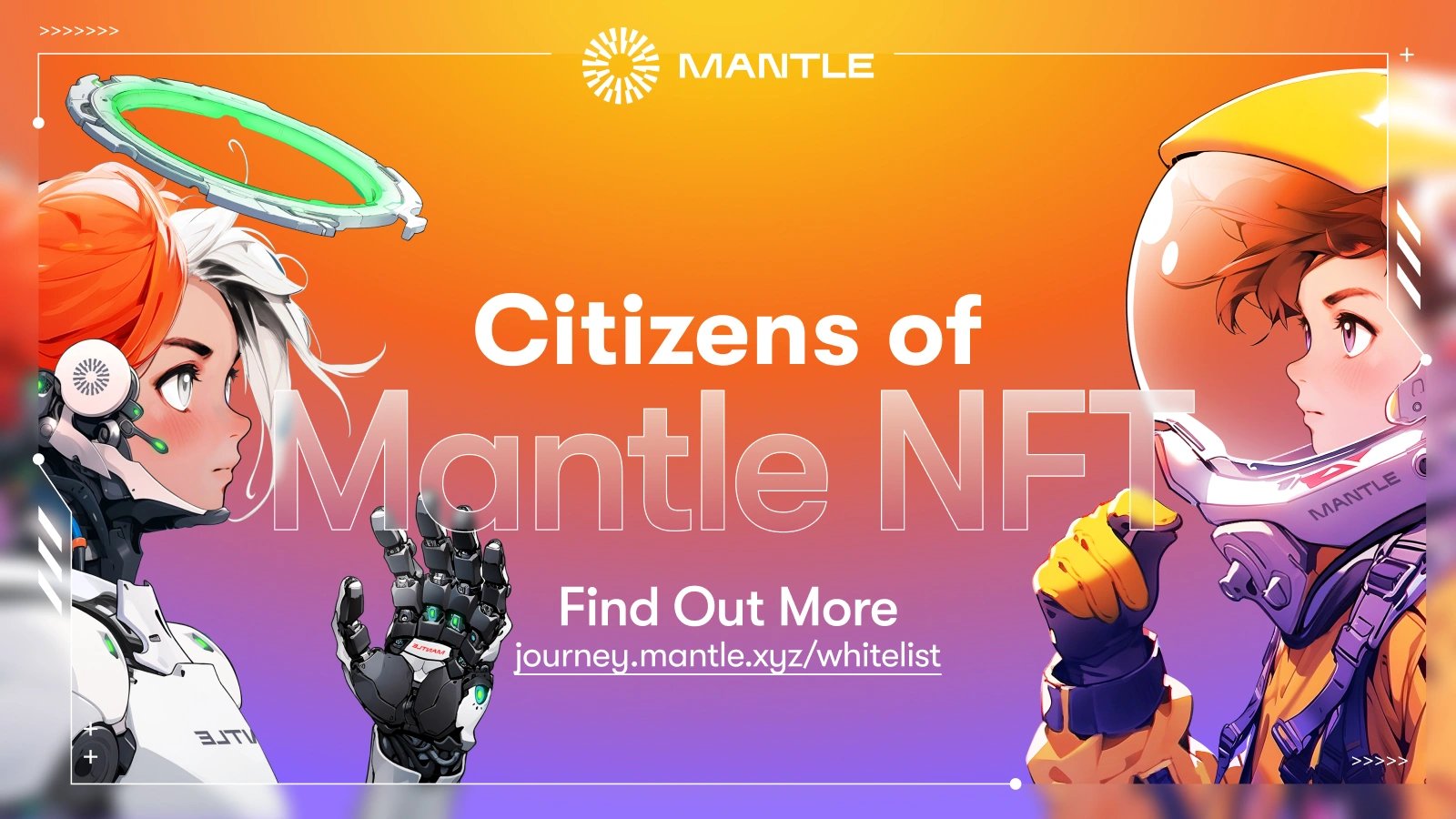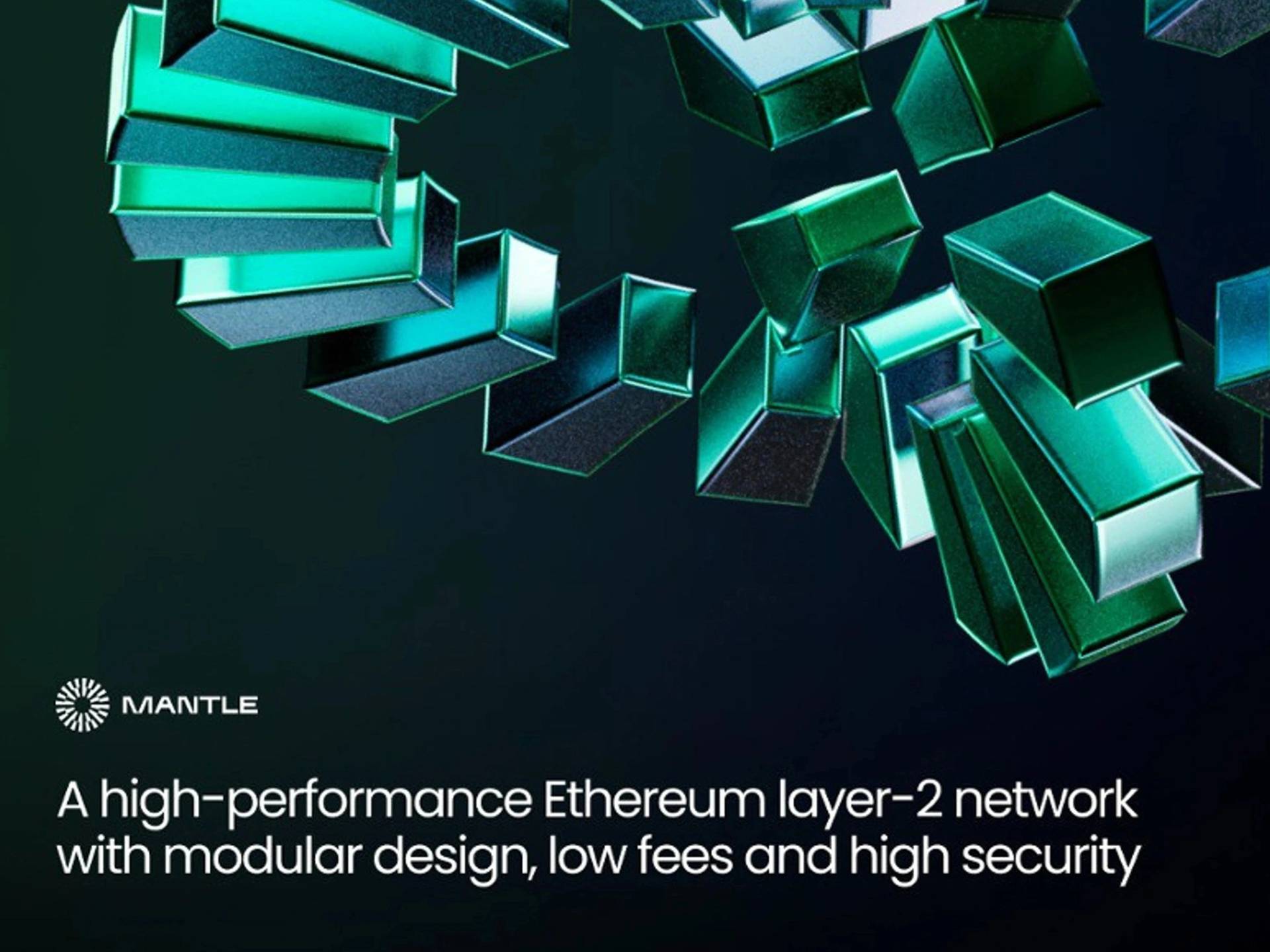订阅 wiki
Share wiki
Bookmark
Mantle Network
Mantle Network
Mantle Network 是与以太坊虚拟机 (EVM) 兼容的 Layer-2 扩展解决方案。它采用 Optimistic rollups 来实现快速且经济高效的交易。通过链下处理交易并在链上结算,Mantle Network 在利用以太坊功能的同时确保效率。 [1]
概述
Mantle Network 由 匿名人士 创立。Mantle Network 专注于开发与 以太坊 生态系统兼容的扩展解决方案,确保现有合约和工具的无缝互操作性,并尽量减少调整。Mantle Network 利用其模块化架构,集成了 乐观rollup 机制和创新的数据可用性解决方案,在保持 以太坊 安全标准的同时,增强了可访问性和可负担性。[1]
该协议设计强调通过降低成本和提高可用性来增强用户体验,简化开发者开发流程,并为新兴的 去中心化应用程序 (dApps) 提供强大的基础设施。通过采用 rollup 结构,Mantle Network 利用 以太坊 的 验证者 和 共识 协议来显著降低 gas 费用,减少交易延迟,并提高吞吐量。用户可以灵活地定制交易确认要求,从而实现接近实时的确认并优化安全参数。[1]
Mantle Network 的模块化架构将交易执行、共识、结算和存储功能分离到链内的不同模块中。这包括一个与 EVM 兼容的执行层用于交易处理,一个在 以太坊 平台上执行的共识和结算层,以及一个外部数据可用性组件,目前是由 EigenDA 技术提供支持的 Mantle DA。[1]
历史
Mantle Network于2023年7月启动,是由DAO推出的第一个Layer-2解决方案。该网络起源于BitDAO,以其在加密领域的庞大资金库而闻名。在2023年5月社区投票后,该网络与Mantle合并。此次合并导致BitDAO更名为Mantle,所有BIT代币从2023年6月起均可以1:1的比例转换为MNT代币。 [2]
Everest 更新
Mantle v2 Everest 是对 Mantle 网络的一次重大升级,此前 Mantle v2 Tectonic 已稳定运行一年多。此次升级改进了网络的基础设施,并使其与 以太坊 即将到来的 Pectra 升级保持一致,确保技术兼容性,并为未来的发展做好准备。
升级的核心组成部分是集成 EigenDA。此前,Mantle 依赖于 Mantle DA,这是一个基于 EigenDA 技术构建的数据可用性层。随着 EigenDA 的上线,Mantle 已在 测试网 和 主网 环境中完全过渡到它。预计这种集成将增强数据处理和网络安全性。此次升级还包括对 以太坊 Pectra 升级的调整。Mantle 现在支持 EIP-7685 和 EIP-7702 引入的更改,包括在区块头中添加 RequestsHash 字段和一个新的交易类型 SetCodeTx,确保与 以太坊 Layer 1 的发展保持一致。[20]
Everest 升级中引入的新功能包括支持 RIP-7212 预编译合约和扩展 op-geth 的功能。这些变化反映了 OP Stack Bedrock 框架的持续发展。先前允许 gas 费赞助的 MetaTX 功能已被删除。其功能将被实施 EIP-7702 来取代,作为更广泛的 以太坊 升级的一部分,使 Mantle 的方法与更新后的 以太坊 生态系统保持一致。[20]
功能特性
模块化区块链 Rollup
Mantle 网络对其执行、共识、结算和数据可用性功能采用分层方法,允许不同的网络参与者管理专门的层。这种架构设计使 Mantle 网络能够显著降低 gas 成本并提高整体性能。 [3]
Mantle 网络采用模块化 Rollup 模型,优化了基本的 区块链 操作,解决了 区块链 社区中的一个重大挑战:即可扩展性、安全性和去中心化三难困境。 [3]
资源的分离通过将特定任务分配给每一层来提高网络效率,确保所有用户都能从改进的安全性中受益,这与仅依赖第 1 层 (L1) 中的完整 节点 验证器 不同。在单独的层上运行减轻了 节点 上的执行和验证负担,因为欺诈证明和 ZK 证明 等技术不再要求它们执行所有交易以进行有效性检查。 [3]
数据可用性
Mantle Network 通过利用 EigenLayer(一种重新质押协议)来解决 rollup 架构中固有的安全问题。EigenLayer 利用 Ethereum 的可信网络来确保 Layer-2 解决方案的数据可用性,同时保持类似于 Ethereum Mainnet 的安全级别。通过 EigenLayer 的数据可用性解决方案(称为 EigenDA),Mantle Network 使节点能够提供数据可用性服务。验证者 通过 staking $MNT 代币参与 Mantle Network 的经济模型,从而解锁额外的收益前景。这种参与增强了 Mantle Network 执行层中区块数据的完整性和准确性。[3]
EigenDA 将数据可用性与共识层分离,并实施单播通道,以便在网络参与者之间高效地存储和传输数据。它还保持擦除率,从而可以通过来自 Layer-2 和 Layer-1 来源的数据片段来促进完整的区块数据重建。该解决方案增强了 $MNT 在治理功能之外的效用,同时为下一代 Web3 应用程序提供所需的高吞吐量。[3]
欺诈证明
在 rollup 采用的乐观模型中,假设网络参与者行为良好,因此需要强大的欺诈证明实施来加强网络完整性。然而,实施欺诈证明面临挑战。[3]
目前,链上验证器只能在较低级别的虚拟机中执行指令,需要 EVM 客户端将欺诈证明翻译成这种语言。因此,欺诈证明的内容通常不是直接从兼容的 EVM 客户端获得的,并且无法验证其来源,因为链上验证器无法看到欺诈证明的生产者。这阻碍了 Ethereum 客户端中嵌入的信任最小化。[3]
Mantle Network 通过采用直接编译和验证使用 EVM 指令的欺诈证明的方法来解决此问题。这允许所有 Ethereum 客户端公开地与共享证明系统交互,从而减少验证者、编译器和客户端之间的信任假设。[3]
交易生命周期
Mantle网络中的交易始于钱包用户、DApp或脚本发起的交易。Mantle SDK等工具简化了请求的创建、签名和提交,以便Sequencer处理。验证后,交易被添加到待处理区块中,利用批量处理来分摊固定成本并最小化交易费用。[3]
随后,阈值签名方案节点在通过Sequencer传输到以太坊网络之前验证区块数据。Rollup验证器同步Mantle网络中的数据,供用户和DApp访问,而以太坊通过其共识机制记录链上的传输数据。此外,数据可用性节点同步并确保Mantle网络内的数据访问,并获得$MNT代币作为奖励。[3]
MNT
$MNT 代币在 Mantle 生态系统中履行双重角色,充当治理和实用代币。在治理方面,每个 $MNT 代币在投票权中具有相同的权重,允许代币持有者参与 DAO 决策过程。作为实用代币,$MNT 用于支付 Mantle 网络上的 gas 费用,也可以作为 Mantle 网络 节点 的抵押品。作为原生代币,$MNT 与其他 Layer-2 区块链 代币共享类似的功能。[3]
Tokenomics
Mantle (MNT) 代币的初始分配如下:[4]
- 49.00% 分配给国库
- 51.00% 分配给流通

Mantle公民
Mantle公民是由视觉艺术家陈漫创作的首个原生模块化NFT系列。这个头像系列旨在奖励活跃的社区成员。它旨在与Mantle Journey计划同步,为参与Mantle社区提供额外激励。用户可以通过连接钱包验证资格来加入白名单。[5]
成为Mantle公民可以让个人访问Mantle生态系统中的沉浸式体验。Mantle公民NFT头像是用户在Mantle网络中构建、连接、游戏、赚取和交易的忠实伙伴。随着用户在Mantle生态系统中实现里程碑,他们的NFT头像将进化,获得各种特征。这些头像反映了在Mantle生态系统中的参与和成就,随着参与者的进步,解锁未来的利益和机会。[5]

mETH 协议
mETH 协议 作为一个无需许可且非托管的 ETH 流动性质押 协议运行,该协议部署在 以太坊 L1 上,并由 Mantle 治理。它具有简单而现代的设计,以及强大的风险管理措施,利用 Mantle 生态系统资源提供有益的体验并增强 Mantle 的收益潜力。Mantle 质押以太币 ($mETH) 作为 mETH 协议 中的价值累积凭证代币,促进质押者 ETH 存款的汇集。质押者收到 $mETH 代币,代表他们对质押本金和应计奖励的索取权,这些代币可用于其他应用程序。在取消质押时,质押者将收到他们质押的 ETH 以及在 质押 期间获得的任何奖励,包括发行、优先费用和最大可提取价值 (MEV),这些奖励将在质押者、LSP 和 节点 运营商之间分配。[6]
Mantle Index Four (MI4)
Mantle Index Four (MI4) 是一项基金,旨在为主要数字资产提供受监管的敞口,同时结合去中心化收益策略。它面向传统和 crypto-native 投资者,旨在简化 crypto 市场的准入,而无需直接托管或手动投资组合管理。
该基金组织形式为 BVI 有限合伙企业,由 Mantle Guard Limited 管理。它提供 BTC、ETH、SOL 和美元 stable 资产的精选投资组合,并根据市值和风险指标按季度调整配置。该策略包括 staking 组件,例如 mETH、bbSOL 和 sUSDe,通过 DeFi 机制增加回报,同时保持对合规标准的遵守。
在获得 DAO 批准后,Mantle Treasury 已承诺向 MI4 投资高达 4 亿美元作为初始投资。该基金使用 Securitize 的代币化服务在 Mantle 网络上发行投资者权益。
运营基础设施包括 Fireblocks 和 multi-signature wallets 等机构级工具,并正在考虑其他托管解决方案以提高安全性。MI4 旨在作为具有集成收益功能的 crypto Beta 敞口的参考点,将传统金融结构与 decentralized finance 协议连接起来。 [21] [22]
合作伙伴
发现错误了吗?
